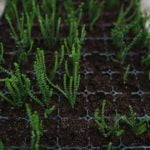Small vegetable gardening ideas are perfect for beginners looking to dip their toes into the world of growing their own produce. The beauty of small vegetable gardens lies in their simplicity and manageability, making it an ideal starting point for those new to gardening. With the right guidance and a bit of creativity, even the smallest of spaces can be transformed into thriving vegetable patches.
One of the key advantages of small vegetable gardening is its accessibility – you don’t need a sprawling backyard or extensive gardening knowledge to get started. Even urban dwellers with limited outdoor space can enjoy growing their own fresh vegetables right at home. Whether you have a balcony, patio, or just a sunny windowsill, there are plenty of innovative ways to cultivate a bountiful harvest in a compact area.
In this article, we will explore the ins and outs of small vegetable gardening, from choosing the perfect location for your garden to maximizing production in limited spaces. We will delve into container gardening for those with minimal outdoor space, as well as vertical gardening techniques that utilize walls and structures to grow upwards.
Additionally, we will discuss companion planting strategies, pest control methods, creative ideas for small gardens, and tips on harvesting and enjoying your homegrown bounty. So get ready to roll up your sleeves and start cultivating your very own mini vegetable oasis.
Choosing the Right Location for Your Small Vegetable Garden
When it comes to small vegetable gardening, one of the most important factors to consider is choosing the right location for your garden. The success of your vegetable plants will greatly depend on the amount of sunlight, available space, and quality of soil in that particular area. Here are some key points to keep in mind when selecting a location for your small vegetable garden:
- Sunlight: Most vegetables need at least 6-8 hours of direct sunlight each day to thrive. Choose a spot in your yard or balcony that receives adequate sunlight throughout the day.
- Space: Consider the size of your small vegetable garden and make sure you have enough room for all the plants you want to grow. Utilize vertical gardening techniques if space is limited.
- Soil Quality: Ensure that the soil in your chosen location is well-draining and rich in nutrients. You may need to amend the soil with compost or organic matter before planting your vegetables.
With these considerations in mind, you can set up your small vegetable garden for success and maximize the growth and yield of your plants. By providing optimal conditions for your vegetables to thrive, you can enjoy a bountiful harvest of fresh produce right at home.
Whether you’re planting in raised beds, containers, or directly in the ground, taking the time to choose the right location for your small vegetable garden will pay off in healthy, abundant crops. With proper sunlight exposure, enough space for growth, and nutrient-rich soil, you can set yourself up for a successful gardening season filled with delicious homegrown veggies.
Small Space, Big Yield
Small space gardening doesn’t have to mean sacrificing a bountiful harvest. There are several strategies that can help you maximize production in a limited area, making the most of every square inch of your small vegetable garden. One key approach is utilizing raised beds or square foot gardening techniques. These methods allow you to densely plant your vegetables in designated areas, ensuring that each plant has enough space to grow while making efficient use of the available space.
Another effective way to boost your yield in a small vegetable garden is by practicing succession planting. This involves planting new crops as soon as one harvest is finished, allowing you to grow multiple crops throughout the growing season in the same space. By carefully planning your planting schedule and choosing vegetables with short maturity times, you can enjoy a continuous harvest from your small garden all season long.
In addition, intercropping can be beneficial for maximizing production in a small space. This technique involves planting different types of vegetables together in the same area based on their compatibility and growth patterns. For example, fast-growing crops like lettuce can be planted alongside slower-growing ones like tomatoes, making use of the available space efficiently while also providing mutual benefits such as pest control and soil enrichment.
| Vegetable Gardening Strategy | Description |
|---|---|
| Raised Beds / Square Foot Gardening | Densely plant vegetables in designated areas for efficient use of space. |
| Succession Planting | Plant new crops as soon as one harvest is finished for continuous production. |
| Intercropping | Planting different types of vegetables together based on compatibility and growth patterns in the same area. |
Container Gardening
Choosing the Right Containers
When it comes to container gardening in small spaces, choosing the right containers is crucial. Opt for pots or planters that are appropriate for the size of the plant you want to grow – larger containers are best for vegetables like tomatoes and peppers, while smaller pots may be suitable for herbs or lettuces.
Ensure that each container has drainage holes at the bottom to prevent waterlogging and root rot. Additionally, consider the material of the containers – while terracotta pots are porous and allow for better airflow, plastic containers retain moisture well.
Selecting the Right Vegetables
Not all vegetables thrive in containers, so it’s important to choose varieties that are well-suited for small spaces. Herbs like basil, parsley, and mint are excellent options for beginners as they require minimal space and care. Cherry tomatoes, bush beans, radishes, and peppers are also great choices for container gardening. When selecting your vegetables, consider factors such as sunlight requirements and maturity time to ensure a successful harvest.
Caring for Your Container Garden
To ensure your container garden thrives in its small space, proper care is essential. Make sure to water your plants regularly but avoid overwatering as this can lead to root rot. Fertilize your plants according to their specific needs – some may require more nutrients than others. Monitor your plants closely for any signs of pests or diseases and take prompt action if needed. Lastly, remember to rotate your containers occasionally to ensure uniform growth and exposure to sunlight.
By following these tips on container gardening, even those with limited space can enjoy growing their own fresh produce right at home. With a little planning and creativity, anyone can create a flourishing vegetable garden on their balcony or patio. Embrace the versatility of container gardening and start growing your favorite veggies today.
Vertical Gardening
Vertical Trellises and Supports
One of the key elements in vertical gardening is the use of trellises, supports, and structures to maximize space. Whether you have a small backyard or a balcony, vertical trellises can be attached to walls or fences to support climbing vegetables like tomatoes, cucumbers, beans, and peas. Consider using sturdy materials like bamboo or metal for durability and stability. Additionally, creating a DIY trellis with strings or netting can provide a cost-effective solution for your small vegetable garden.
Hanging Gardens
For those with limited ground space, hanging gardens are an excellent way to grow vegetables vertically. Hanging baskets or wall-mounted planters can be used to plant herbs, lettuces, strawberries, and even cherry tomatoes. When setting up hanging gardens, ensure proper drainage by drilling holes in the bottom of containers and using lightweight potting mix. Be mindful of weight limits for hanging baskets to avoid accidents.
Living Walls
Another innovative approach to vertical gardening is the concept of living walls. These vertical structures consist of pockets or modules that hold plants and soil vertically against a wall. Living walls not only save space but also create a stunning visual display in any outdoor or indoor setting.
They can be planted with a variety of herbs, greens, and small vegetables like radishes or mini peppers. Consider incorporating drip irrigation systems into your living walls for efficient watering in your small vegetable garden.
By implementing these ideas for vertical gardening in your small space, you can make the most out of limited area while enjoying a bountiful harvest of fresh vegetables right at your fingertips. Vertical gardening not only maximizes productivity but also adds aesthetic appeal to any home or urban environment. Experiment with different techniques and combinations to find what works best for your small vegetable garden setup.
Companion Planting
For small vegetable gardening ideas, companion planting can be especially useful in optimizing the limited space available. For example, planting aromatic herbs like basil near tomatoes can help deter pests that commonly affect tomato plants. Additionally, pairing leafy greens like lettuce with taller plants such as corn or sunflowers can provide shade and protection from harsh sunlight.
Another advantage of companion planting in small vegetable gardens is the ability to intercrop different vegetables within the same area. This method allows for efficient use of space while promoting biodiversity and enhancing overall garden health. For instance, growing beans alongside carrots can help fix nitrogen in the soil, benefiting both crops and reducing the need for synthetic fertilizers.
In addition to improving plant growth and health, companion planting in small vegetable gardens can also enhance the visual appeal of your garden. By creatively combining colors, textures, and heights of different plants, you can create a beautiful and functional garden space. Whether you’re looking to increase yield, reduce pests naturally, or simply experiment with new plant pairings, incorporating companion planting into your small vegetable garden can make a big impact on your gardening success.
Pest Control and Disease Prevention in Small Vegetable Gardens
When it comes to maintaining a successful small vegetable garden, addressing pest control and disease prevention is crucial to ensure a bountiful harvest. While small spaces may seem easier to manage, they can also be more susceptible to pests and diseases due to the close proximity of plants. However, with the right strategies and natural solutions, you can effectively protect your crops without relying on harsh chemicals.
To start off, one effective method for pest control in small vegetable gardens is companion planting. By interplanting certain vegetables, herbs, and flowers that naturally repel pests or attract beneficial insects, you can create a more balanced ecosystem in your garden. For example, planting marigolds around your tomatoes can help deter nematodes, while basil planted near peppers can ward off aphids.
Another key aspect of pest control and disease prevention in small vegetable gardens is proper sanitation practices. Regularly removing any diseased or infested plant material, such as leaves or fruits, can help prevent the spread of pests and diseases throughout your garden. Additionally, rotating crops each season can disrupt pest cycles and reduce the likelihood of recurring issues.
In addition to companion planting and sanitation practices, utilizing homemade remedies like garlic spray or neem oil can provide effective yet gentle pest control in your small vegetable garden. These natural solutions are safe for both your plants and the environment, making them ideal for eco-conscious gardeners. By combining these methods with careful observation and maintenance, you can protect your crops from common pests and diseases while fostering a thriving garden filled with fresh produce.
Creative Small Vegetable Gardening Ideas
Small vegetable gardening is a great way for beginners to dip their toes into the world of gardening. Despite having limited space, there are plenty of creative ways to grow a variety of vegetables right at home.
One idea for small vegetable gardening is utilizing hanging baskets or vertical planters to save space and add a decorative touch to your outdoor area. These containers can be hung on walls, fences, or even from hooks on the ceiling, allowing you to grow a vertical garden with herbs, tomatoes, peppers, and more.
Another innovative small vegetable gardening idea is creating a “green wall” by using modular systems that allow you to stack planters on top of each other. This not only maximizes your growing space but also adds an aesthetically pleasing element to your garden. You can plant different vegetables in each tier based on their needs for sunlight and water, creating a diverse mini-ecosystem right at home.
For those looking for a more unconventional approach to small vegetable gardening, consider repurposing items like old pallets or gutters to create unique growing spaces. Pallet gardens can be leaned against walls or fences, while gutters can be mounted horizontally along railings or walls for growing shallow-rooted vegetables like lettuce or radishes. Get creative with your small vegetable garden design and think outside the box when it comes to utilizing every inch of available space.
| Small Vegetable Gardening Ideas | Benefits |
|---|---|
| Hanging Baskets & Vertical Planters | Saves space and adds decorative touch |
| “Green Wall” Modular Systems | Maximizes growing space and creates visual appeal |
| Repurposed Pallets & Gutters | Creative use of materials for unique growing spaces |
Harvesting and Enjoying the Fruits (And Vegetables) of Your Labor
As you delve into the world of small vegetable gardening, the ultimate reward awaits you at the end of your journey – a bountiful harvest of fresh, homegrown produce. Harvesting and enjoying the fruits (and vegetables) of your labor is a satisfying experience that connects you to the earth and allows you to reap the delicious rewards of your hard work.
In this final phase of your small vegetable gardening adventure, it’s important to know when and how to pick your crops, as well as how to properly store them for maximum freshness.
When it comes to picking your homegrown veggies, timing is key. Each type of vegetable has its own optimal harvesting window, determined by factors like size, color, and texture. For example, tomatoes should be picked when fully ripe on the vine for the best flavor, while leafy greens like lettuce and spinach are tastiest when harvested young and tender.
Be sure to check individual plant guidelines for specific harvesting instructions. Remember, the ultimate goal is to enjoy your vegetables at their peak flavor and nutritional value.
Once you’ve gathered your precious produce from your small vegetable garden, proper storage is essential to prolonging their freshness. Some vegetables can be stored at room temperature in a cool, dark place, while others might benefit from refrigeration in order to maintain their crispness and flavor.
Consider investing in storage containers or bags designed specifically for keeping vegetables fresh longer. By taking care in how you harvest and store your homegrown bounty, you’ll be able to savor the flavors of your small vegetable gardening success long after the growing season has ended.
Frequently Asked Questions
What Can I Plant in a Small Vegetable Garden?
In a small vegetable garden, you can plant a variety of vegetables that are well-suited to confined spaces. Some popular options include cherry tomatoes, lettuce, peppers, green beans, herbs like basil and cilantro, radishes, and even small varieties of eggplant or zucchini.
How Do You Organize a Small Vegetable Garden?
Organizing a small vegetable garden involves maximizing the use of space efficiently. You can use techniques like companion planting to maximize space while deterring pests, utilizing vertical gardening with trellises or cages for vine plants like cucumbers and beans, and implementing succession planting to ensure a continuous harvest throughout the growing season.
What Are the 10 Easiest Vegetables to Grow?
The 10 easiest vegetables to grow in a home garden include tomatoes, zucchini, green beans, radishes, lettuce, peppers, cucumbers, carrots, peas, and herbs such as basil or mint. These vegetables are relatively low-maintenance and can thrive in various growing conditions with proper care.

Welcome to my gardening blog! I am passionate about plants and enjoy sharing my knowledge and experiences with others. In this blog, I will write about everything related to gardening, from tips on how to get started to updates on my own garden projects.





